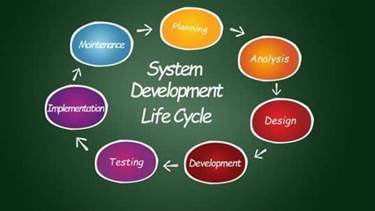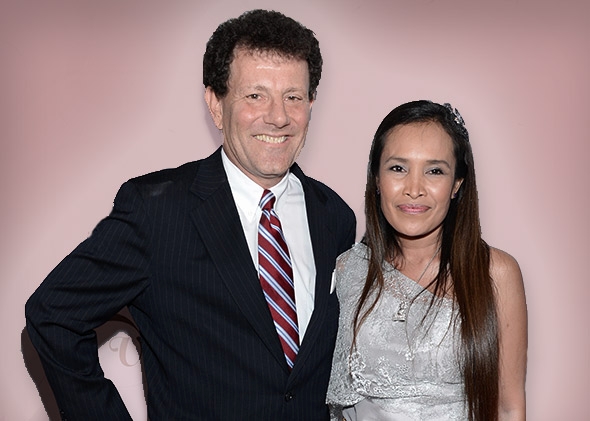Содержание
- Managing Conflict In Remote Teams
- The Team ‘s Four Stages Of Team Development
- Stages For Developing Group & Team Concepts In The Workplace
- So Where Is Your Team Right Now?
- What Are The Stages Of Team Development?
- How To Help Your Team Progress Through The Stages Of Group Development
- Your Team Development Partner
Some employees will feel optimistic and excited; some will feel anxious and fearful; some will feel suspicious, and others will worry about their productivity expectations. From Implicit Bias to Managing Change, your leaders need training that moves the company forward. Recently I overheard a team reassuring themselves about how, of course, they were revisiting an earlier stage given a new challenge they were facing. It brought them great relief to know this was a natural process and that it was not that they were deficient in some way as a team.

There is a clear and stable structure, and members are committed to the team’s mission. Problems and conflicts still emerge, but they are dealt with constructively. The team is focused on problem solving and meeting team goals. This is the where team members begin to but heads as they have different opinions regarding the project and compete with one another for status and for acceptance of their ideas. Every team goes through this and it is unavoidable, but it can be handled in a positive and meaningful way. At this stage, it is up to the team leader to manage conflict and ensure idea sharing is done as productively as possible.
To illustrate the 5 stages of team development, let’s look at the example of Daisy, Adam, Daniel, Mark, and Stella. The 5 of them are neighbors and they just moved to the countryside. As a team leader, your aim is to help your people perform well, as quickly as possible. To do this, you’ll need to make sure you are able to understand at which stage your team is and adapt your leadership style accordingly. Bruce Tuckman published his “Forming Storming Norming Performing” model in 1965.
Managing Conflict In Remote Teams
Project Managers, Scrum Masters, Agile Coaches, DevOps Leads, and other professionals can apply the information to help handle challenges or issues experienced by teams. The adjourning stage is an excellent opportunity for team leaders to encourage long-term relationships, celebrate the project’s closing, and reflect on the team’s progress and efforts. In an organization, the adjourning stage could translate into a change in employees’ job responsibilities.

Go over the project’s plan and objectives with the group in as much detail as possible, and review the proposed time frame. Encourage people to point out spots where problems may occur and where improvements could be made. This is the point where the project comes to an end and the team separates and goes their separate ways. Some team members may find this hard because they liked the routine of the group, have made close friendships or if the future, after leaving this team, looks bleak and unpromising.
The Team ‘s Four Stages Of Team Development
This can lead to conflict, disputes, and competition, depending on how their expectations, workflows, ideas, and opinions differ. The first 4 stages of group development are also known as the “Forming-Storming-Norming-Performing Model” — they were established by Bruce W. Tuckman, an American Psychological Researcher, in 1965. Now consider what you need to do to move towards the performing stage. Figure 1, helps understand the characteristics of each stage in details and lists the best strategies to succeed.

For instance, if the team develops a new work process for improving the customer experience, members may be asked to oversee the new and improved process. If teams get through the storming stage, conflict is resolved and some degree of unity emerges. In the norming stage, consensus develops around who the leader or leaders are, and individual member’s roles.
They feel proud when they see that they each spend about 4 hours a week on gardening, as that means a larger amount of vegetables will produce well. The Performing stage is what your team is really after — in this stage, you and your team get to enjoy synergy. Figure 2 presents an alternative way of representing the model, which specifically adapts to Aile teams for example. Despite being dated, from experience I still find Tuckman’s Model to be very solid and relevant, and useful for any Manager, Human Resource Professional and Facilitator. One of the biggest critiques to the model is that it sometimes is too simplified when presented in a linear way. They know and rely on each other’s strengths and can work together to achieve ambitious goals and meet deadlines.
Stages For Developing Group & Team Concepts In The Workplace
Groups rely on social cues to move from one stage to the next, and the lower the amount of social interaction, the more difficult it is for team formation to progress. This is an area of team formation where remote leaders will want to pay extra attention. This is the exact reason why stages of team development are so important — the team has to keep moving forward.

Thankfully, you can deploy some strategies to ensure your team navigates the stages without issues. For instance, outlining the team’s purpose and mission at the forming stage and retaliating during subsequent stages ensures no one loses sight of the common goal. Here, there’s cohesion, trust, and understanding among team members. The team functions at peak efficiency, and little or no oversight are needed.
So Where Is Your Team Right Now?
And, boy, am I glad we did–to this day, she’s one of my most trusted colleagues. Ultimately, the goal is to make sure you can provide psychological safety as a baseline, evaluate team patterns of behaviour and notice when you’re in a negative cycle. While all phases of team building are important, many leaders consider storming to be the most important stage of team development. During the storming stage, team members encounter initial obstacles and master conflict resolution. This is one of the most crucial points for building trust and forming resilient relationships. Teammates move beyond the introductory forming stage and start putting plans into action.
- In this case, the team leader should celebrate the team’s achievements to reinforce the professionals’ sense of pride and satisfaction and instil motivation for future assignments.
- Of distance makes the “feelings issues” that are a part of each of Tuckman’s four stages take longer to process.
- You cannot treat a team the same way at each stage of its development because the stages dictate different support actions.
- At the same time the manager will be challenging team members to take on extra capabilities in order to move the team on to the next stage.
- This is useful to use as a diagnostic framework to overcome hitches when integrating remote or virtual teams.
- In 1977, Bruce Tuckman added another stage that some teams experience.
When your team has grown through the stages of team development they establish a state of “flow”. But the reality is, most projects come with fixed beginning and end dates, regardless of available resources. In the planning phase, however, much is still in flux, so you’ll revise your objectives later on, as you gather information about what you need to achieve.
They also need to streamline competition and ensure the projects they’re handling stay on track. Norms are only effective in controlling behaviors when four stages of group development they are accepted by team members. The level of cohesiveness on the team primarily determines whether team members accept and conform to norms.
What Are The Stages Of Team Development?
How did you know what behaviors were acceptable or what level of performance was required? Teams usually develop norms that guide the activities of team members. Team norms set a standard for behavior, attitude, and performance that all team members are expected to follow.
In this stage, the team comes together for the first time, and members get to know each other. The forming stage is often slow and casual since it primarily involves members getting acquainted. Trust is built, which plays a critical role in the team’s success. Our discussion so far has focused mostly on a team as an entity, not on the individuals inside the team. This is like describing a car by its model and color without considering what is under the hood. External characteristics are what we see and interact with, but internal characteristics are what make it work.
Each member’s talents and skills get validated and utilized in executing the necessary tasks. As a result, the team starts to operate more effectively and gains momentum towards realizing the shared goals. Members become more comfortable with each other and understand the significance of utilizing their diverse perspectives to find practical solutions to any challenges. As strong personalities emerge, team leaders should ensure these individuals don’t inadvertently dominate the rest of the team and the project’s outcomes.
How To Help Your Team Progress Through The Stages Of Group Development
There are also employees who will experience feelings of relief that the team was successful and their workload can return to normal. At this team development stage, team members are testing each other to see if or how they can work together productively. To move to the next https://globalcloudteam.com/ stage, your employees must reach a level at which they can effectively communicate with each other. Teams move through predictable stages of team development, but how quickly and easily they progress depends on how well the needs of the team are being met during each stage.
Finally, they should ensure the team can resolve internal conflicts and disagreements. The roles and boundaries are typically unclear at the Storming stage. Team members may not like the work style of their new colleagues, challenge the emerging team norms and resist control. Managers must ensure that the team norms are discussed, accepted, and followed by each team member.
One of the best ways to build team chemistry is to have a clear understanding of the typical stages of team development. Teams in this stage are transitioning from the design team to the school leadership team that will run the school. Not all members of the design team go on to be members of the school leadership team. The team is collaborating to meet the original goals and objectives, and the members are excited to be on a high-performing team. The adjourning or mourning stage of team development is where the group parts ways. The project has reached its natural end, and group members acknowledge that while the group has found success, it is time for the team to split and move on to new challenges.
Thriving in today’s marketplace frequently depends on making a transformation to become more agile. Those successful in the transition enjoy faster delivery speed and ROI, higher satisfaction, continuous improvement, and additional benefits. He released an updated version of the visual on January 4, 2021. This article features the new version of the Phases of Team Development illustration along with an overview of the characteristics and key strategies for each phase. Read on for details including information on permission requests and downloadable high-resolution versions of the visual. From your project experience, describe how the project kickoff meeting for one project could have been improved.
These stages are steps in the team building process and are similar to team building best practices. As the name suggests, team development entails training and supporting a group of individuals so that they work as a cohesive unit to realize the intended outcome. An excellent example of team development is when colleagues from different departments partner to work on a project. The forming stage involves a period of orientation and getting acquainted. Uncertainty is high during this stage, and people are looking for leadership and authority.




